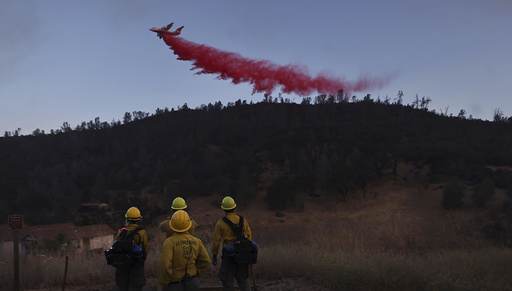The Trump administration is working to consolidate the United States’ wildland firefighting operations into one unified body, an effort that has sparked warnings from former federal officials about potential risks, such as heightened chances of catastrophic fires and significantly increased financial costs. The proposal aims to create a singular Federal Wildland Fire Service which would fall under the jurisdiction of the U.S. Interior Department, and involve the transfer of thousands of existing firefighters from the U.S. Forest Service—currently the largest provider of federal firefighting personnel—into the newly proposed agency.
As wildfires intensify with climate change, 2022 witnessed over 65,000 fires burning about 9 million acres nationwide, spotlighting the urgent need for effective management. Despite criticisms, the administration sees this centralization as a way to streamline efforts, reducing bureaucracy and enabling quicker, more efficient responses. Interior Secretary Doug Burgum defended the proposal, stating the goal is to place more firemen on the ground and eliminate unnecessary administrative procedures that hinder proper resource allocation.
Opponents, including firefighters’ associations and former officials from the U.S. Forest Service, caution that restructuring could create confusion, particularly during peak fire seasons. They argue that prevention via methods like forest thinning and controlled burns might be overshadowed in favor of more immediate fire suppression tactics, which could prove counterproductive in mitigating large-scale blazes. Steve Ellis, representing the National Association of Forest Service Retirees, commented that such an overhaul might destabilize operations, particularly during critical fire periods. His group, joined by several ex-Forest Service chiefs, has expressed concerns in a letter directed at lawmakers, suggesting that the consolidation could inadvertently escalate the likelihood of large-scale fires, risking lives and resources.
Critics also emphasize that segregating firefighting from land management roles would significantly weaken the Forest Service’s effectiveness. Timothy Ingalsbee from Firefighters United for Safety, Ethics and Ecology controversially compared the separation to a detrimental surgery. Despite concerns, the proposal has acquired bipartisan traction, with backing from politicians like Democratic Senator Alex Padilla of California and Republican Senator Tim Sheehy of Montana, who happens to own an aerial firefighting business. Previous analysis from the Congressional Research Service deemed a similar proposal troublesome, stating it might focus excessively on simple metrics like fire size, overlooking essential prevention measures.
Interior Secretary Burgum has indicated that the administration intends to proceed with coordinating efforts with the Department of Agriculture’s Brooke Rollins for the current fire season. Earlier, budget cuts led by billionaire Elon Musk’s spending reduction plans resulted in large-scale layoffs within the Forest Service and other federal units, an action that received significant backlash and a subsequent court mandate for rehiring efforts. However, the workforce has yet to reach its intended size, with thousands still needed. The Interior has around 6,700 firefighters covering various agencies including the National Park Service and the Bureau of Land Management.
State authorities in regions like Washington and Oregon are encountering hurdles due to the diminished federal workforce, complicating preparations for the fire season. The Trump administration further rolled back environmental protections around logging projects on national forests, covering significant areas at high fire risk across the country. Vegetation decline due to pests and disease exacerbates these challenges, prompting concerns about the upcoming wildfire seasons.


